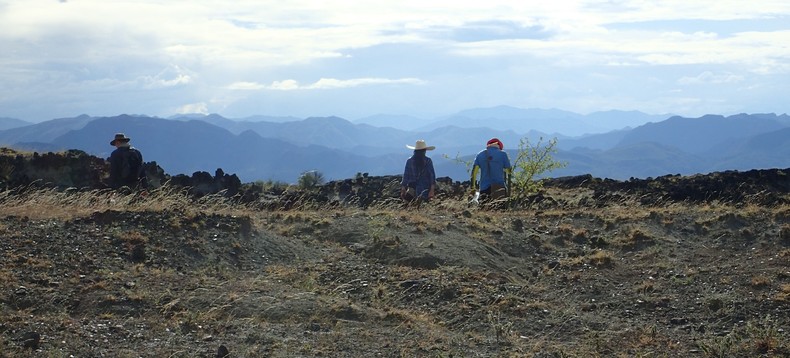¡Viva La Venta!
My summer in search of primate fossils of the Colombian Miocene

"Tortuga!", shouted our desert guide. He had found another fossil turtle shell. One of a great many. Get a GPS point, grab it if it's interesting or potentially diagnostic; we all knew the drill at this point. Turtle shells were definitely plentiful, but as annoyed as we were getting with their seeming superabundance, we all still got a little excited because we knew that where we found turtles we had a good chance of much more rare and exciting fossil species, which for us meant primates. And here in the La Venta formation of the Tatacoa Desert in Colombia, we had arguably the best chance of finding fossil primates on the South American continent.
The La Venta formation is a uniquely dense assemblage of fossil bearing layers dating to around 13 million years ago, a time before North and South America had a constant land bridge connecting them. Animals here evolved in isolation, which means that La Venta was home to some very odd critters -- the objectively silly looking extinct litopterns and glyptodons come immediately to mind. However, our primary reason for visiting this area is the abundance of primate fossils belonging to groups closely related to the species that we find living in the Neotropics today, more of which are represented in La Venta than anywhere else in South America.
Thus I spent most of July 2014 gleefully looking for fossils in a Colombian desert. This project came about as the result of the collaborations of three NYCEP graduates -- Drs. Siobhan Cooke (Northeastern Illinois University), Lissa Tallman (Grand Valley State University), and Andres Link (Universidad de Los Andes) -- who each work on various aspects of South American primate morphology, ecology, conservation, and evolution. Together with their leadership, the hard work of a number of excellent Colombian undergraduates from Universidad de Los Andes, and the invaluable help of our knowledgeable desert guide Chopo, we scoured La Venta for all manner of fossils, always keeping a special eye out for primates.
Our days were generally of typical paleontology stock: rise with the sun, hunt for fossils in promising localities until lunch, then catalog the day's catch or prospect more until dark. We had some unusual days, including one where we marched nine miles to see a giant sloth fossil that had been exposed in a hillside while building a road, and another where we were introduced to a local who had spent thousands of hours procuring the best amateur fossil collections any of us had ever seen from his family's farm. Yet even the average days were exciting and filled with discovery. La Venta gives us an extraordinary snapshot of the Middle Miocene, a valuable glimpse into what conditions were like at a critical stage in platyrrhine evolution, and a chance to better understand how animals react and adapt to changing climatic events. Add to all this expansive azure skies, beautiful (read: very hot) weather, a relatively small number of deadly scorpions, and you've got a perfect place to fossil hunt.
We didn't end up finding any primates this time, but we still managed to collect well over 1,000 identifiable fossils for further analysis and for inclusion in a larger project about the changing paleoecology of the South American Miocene. We hope to continue our fieldwork in La Venta where we have an excellent chance of unearthing truly unique and informative fossils. For this opportunity, we are truly grateful to our Colombian hosts, colleagues and collaborators, and our funding agencies for allowing us to participate in this fruitful field season. We hope to return next summer, and maybe this time we'll find some primate fossils!
Brian is a Ph.D candidate at CUNY/NYCEP studying the role of soft-tissues in the evolution of primate locomotion
